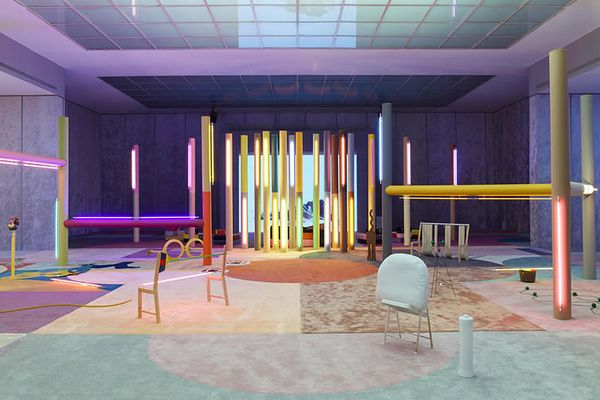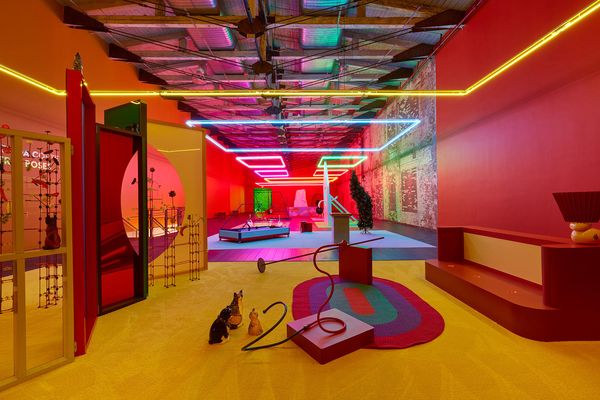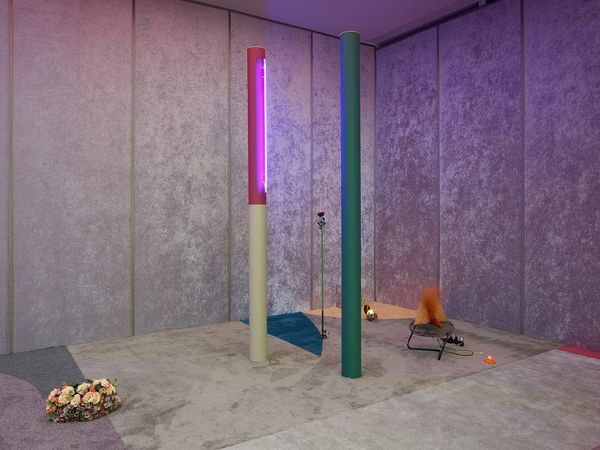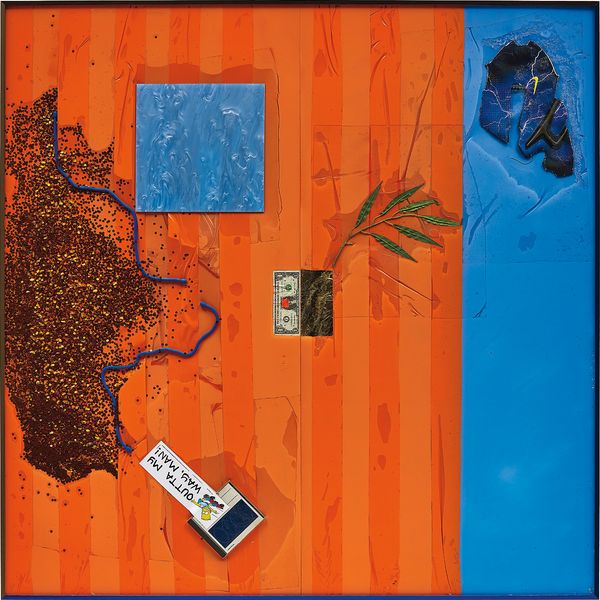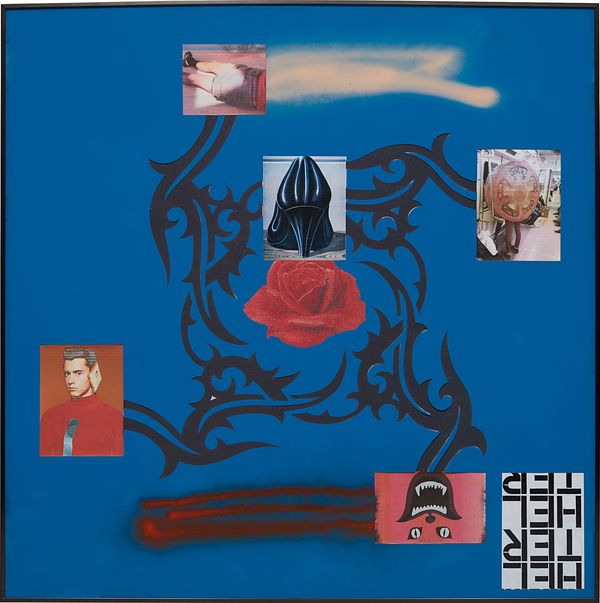Alex Da Corte Slow Graffiti, installation view, Secession 2017 (Vienna). Courtesy of Maccarone, New York, Gió Marconi, Milan and David Risley Gallery, Copenhagen, Photo: Sophie Thun
Celebrated for his enrapturing site-specific installations, Alex Da Corte has gained recent notoriety for his acclaimed solo exhibitions at major institutions this year—namely, Free Roses at MASS MoCA and Slow Graffiti at the Secession in Vienna. Another neon-drenched multimedia installation of his, Easternsports, 2014, featured prominently in Dreamlands: Immersive Cinema and Art, 1905–2016 at the Whitney Museum of Art through February of this year.
Currently at Josh Lilley Gallery in London, Da Corte's Bad Land, which includes references to Monster energy drinks and the infamous Wicked Witch of the West, is on view through 23 December.
Alex Da Corte Free Roses, installation view, MassMoca, North Adams (USA). Courtesy the artist and Luxembourg & Dayan, Photo: John Bernardo
Alex Da Corte Slow Graffiti, installation view, Secession 2017 (Vienna). Courtesy of Maccarone, New York, Gió Marconi, Milan and David Risley Gallery, Copenhagen, Photo: Sophie Thun
Born in Camden, New Jersey, the Philadelphia-based artist attended the School of Visual Arts in New York before receiving his BFA in Printmaking and Fine Arts from the University of the Arts in Philadelphia in 2004 and his MFA from Yale University in 2010. Da Corte is a self-considered "anthropologist of the immediate past." He embeds object artifacts from recent consumer culture in his collages, digitally produced works and constructed environments.
Da Corte achieves a post-Pop contemplation of the excess of imagery, reflecting how contemporary society uses and consumes images—as opposed to the social milieu to which Andy Warhol and Roy Lichtenstein were responding in the 1960s. Among his greatest influences are supermarket displays and other forms of visual, in-store merchandising.
Alex Da Corte The Money Pit, 2013. Spray paint, adhesive vinyl, CD, sticker, currency, plastic leaves, sequins, rubber ties, fabric, marbleized Plexiglas, gold foil, foam and Duct tape, in artist's frame.
The above work from our London New Now sale, The Money Pit, assumes Da Corte's signature use of color, form and cultural referencing to convey his individual artistic inquiry on a two-dimensional plane. The work's title echoes that of the 1986 Richard Benjamin film The Money Pit, featuring Tom Hanks and Shelley Long, whereby a successful couple buys a lavish house for a cut price. Manipulating the aesthetic of the Nike brand and drawing visual reference to The Simpsons, a dollar bill and a floppy disk, Da Corte's piece channels the essence of consumer culture, technology and Pop.
Appearing polished and highly aesthetic, glitter spills across the picture plane, while a succulent combination of orange and blue illuminates the backdrop for the meticulously placed objects. Prompting the viewer to examine our individual relationship to objects, Da Corte taps into deeply personal, nostalgic narratives and familial memories, offering a psychological reading of his enigmatic work.
From a recent sale in 2016, Phillips offered Da Corte's The Nose is a Thorn on The Side of Your Face, 2015, comprised of an amalgamation of compelling imagery made from anodized metal frames, paper xeroxes, color inkjet prints, spray paint, poplin, sequin pins, velvet, Plexiglas and adhesive.
Alex Da Corte The Nose is a Thorn on The Side of Your Face, 2015. Sold for $23,750 in New Now, February 2016.
In addition to the aforementioned shows, Da Corte's work has been included in numerous group exhibitions in venues including the Museum of Modern Art, New York; MoMA PS1, New York; the Studio Museum in Harlem, New York; and Musée des beaux-arts Montréal.
